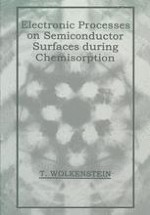1991 | Buch
Über dieses Buch
"Hands are useless if there are no eyes to see what is obvious." -M. V. Lomonosov Dear Reader, I invite you to open this book and step on the semiconductor surface, where the processes that form the subject of the book come into play. The surface of the semiconductor is attracting more and more interest among researchers, in fact researchers in two different fields. These are notably the physicists and engineers engaged in research in semi conductor physics and the making of semiconductor devices. The entire industry of semiconductor instruments hinges on the problem of the surface. The quality of semiconductor devices, whose use is growing steadily, depends essentially on the properties of the surface. The instability of these properties and their uncon trollable alterations with temperature and under the influence of environmental conditions result in a lack of stability in the performance of semiconductor devices, hence the high percentage of waste in their industrial production. The methods used in factory laboratories to prevent such waste are largely empirical. The properties of the surface, the nature of the physicochemical processes that take place on it, and the role of environmental factors still remain obscure. A major task of the semiconductor industry is to learn to control the properties of the surface.
Anzeige
